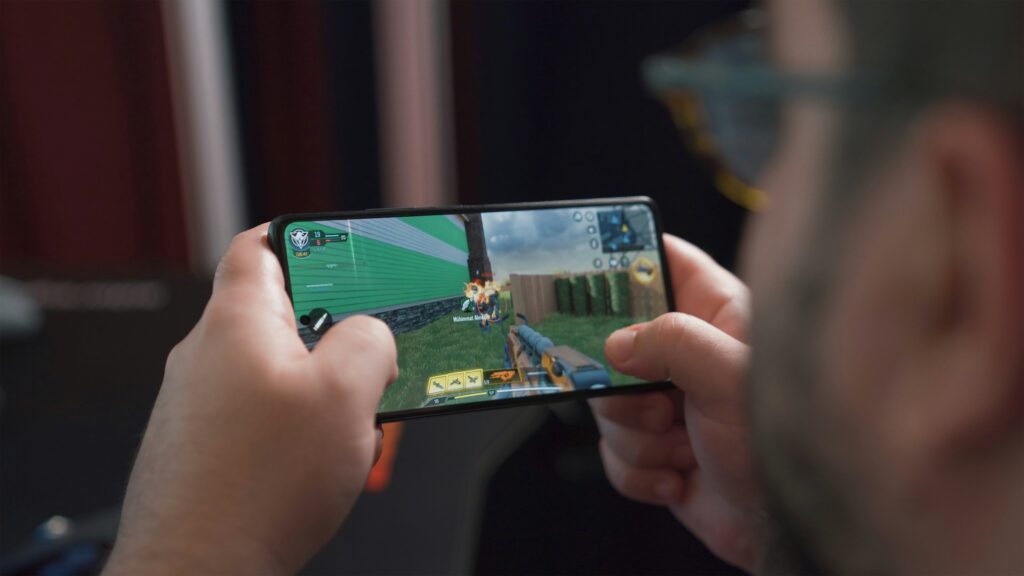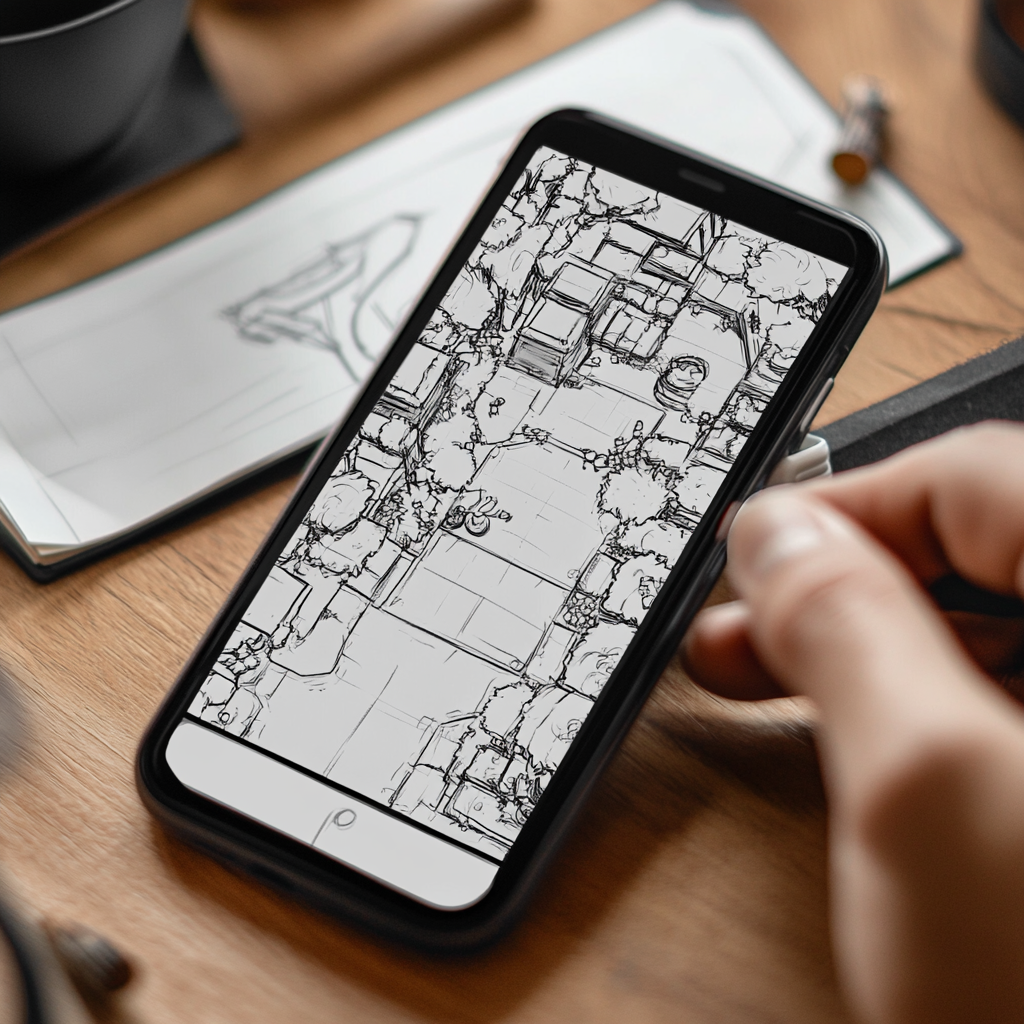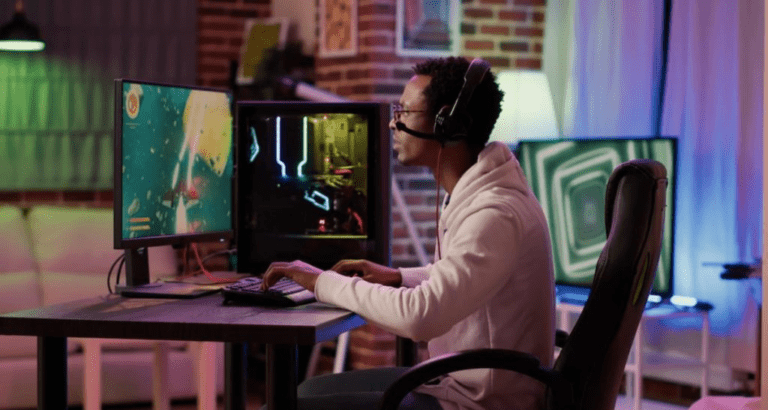Look: the mobile gaming industry is no longer a niche market; it’s a global phenomenon. By the end of 2025, mobile games will account for over 60% of the $556 billion video game market, driven by innovations in cloud gaming, AI, and cross-platform accessibility.
At the heart of this booming sector lies the mobile game designer, a multidisciplinary professional tasked with transforming creative visions into engaging, profitable experiences. In this article, we’ll explore what it takes to thrive in this role today, the tools reshaping the craft, and the trends defining the future of mobile game design.
By the end, you will have a clear idea on how modern mobile game designers balance technical expertise with storytelling finesse, how they navigate industry shifts, and how they leverage partnerships to bring their ideas to life.
You may also like: The evolution of mobile game design software
The mobile game designer toolkit: skills, tools, and adaptability

A mobile game designer nowadays is equal parts artist, engineer, and strategist. Unlike console or PC-focused roles, mobile designers must account for shorter play sessions, diverse device capabilities, and monetization models that prioritize accessibility. Core skills include:
- Technical Proficiency: Mastery of programming languages like C# (for Unity) and C++ (for Unreal Engine) remains critical, but designers now also integrate AI tools like GitHub Copilot for code generation and Ludo.ai for mechanic inspiration.
- Cross-Platform Optimization: With players expecting seamless experiences across iOS, Android, and emerging platforms like cloud gaming services, designers must optimize for performance on resource-constrained devices while maintaining visual polish.
- Player Psychology: Understanding what keeps users engaged – whether through “hook” mechanics in hypercasual games or narrative depth in hybrid-casual titles – is essential. Tools like modl.ai automate playtesting, but human intuition still drives impactful design.
The rise of generative AI has further expanded the designer’s toolkit. Platforms like Midjourney, for example, accelerate concept art creation, while Inworld AI enables dynamic NPC dialogues that adapt to player choices. However, ethical concerns around IP ownership and AI dependency loom large, requiring designers to balance automation with originality.
Current trends that are shaping mobile game design

Hybrid Monetization and Live Ops
The “play-to-win” model is fading. Successful mobile games now blend in-app purchases (IAPs), rewarded ads, and subscriptions to cater to both paying and non-paying users. For instance, MONOPOLY GO!, 2024’s top-grossing mobile game, uses limited-time events and personalized offers to drive a 37% year-over-year revenue increase.
AI-Driven Personalization
AI isn’t just a production tool – given how, among other things, it’s revolutionizing player experiences from the ground up. Mobile games now analyze behavior in real time, adjusting difficulty, narrative paths, and even in-game offers.
For example, AI-powered matchmaking systems ensure balanced multiplayer battles, while procedural generation tools create endless level variations.
The Casual vs. Midcore Balance
While casual games dominate downloads, hybrid-casual titles (e.g., Last War: Survival) are surging by merging simple mechanics with midcore depth. Designers must craft intuitive tutorials for casual audiences while embedding strategic layers to retain dedicated players.
Challenges and opportunities for aspiring mobile game designers
Navigating the mobile gaming industry in 2025 demands resilience and creativity, as aspiring mobile game designers face a landscape defined by both daunting challenges and unprecedented opportunities.

One of the most pressing hurdles is market saturation. With over 49 billion mobile game downloads in 2024 (a 7% decline from the previous year), standing out requires more than a novel idea. Designers must innovate within niche genres, such as narrative-driven puzzle games or location-based AR experiences, or tailor content to regional preferences.
For example, games like Genshin Impact succeeded by blending anime aesthetics with cross-cultural mythology, while hyperlocal titles in markets like India or Brazil prioritize themes resonating with regional folklore or social trends. Viral social features, such as shareable in-game moments or collaborative challenges, further amplify visibility in crowded app stores.
Another critical challenge lies in ethical AI integration. While generative AI tools accelerate asset creation and mechanic prototyping, they also risk homogenizing design and infringing on intellectual property.
Mobile game designers must strike a delicate balance, using platforms like Midjourney or Inworld AI as collaborators rather than replacements for human creativity. For instance, procedural level generators can create endless dungeon layouts, but designers still curate core mechanics to ensure coherence.
Tools like Adobe Firefly’s “Content Credentials” help verify AI-generated art ownership, while open-source frameworks such as Stable Diffusion allow customization to avoid generic outputs. Vigilance in licensing and a commitment to originality remain non-negotiable.
Technical hurdles like platform fragmentation add another layer of complexity. Mobile game designers must optimize for devices ranging from $100 Android smartphones to premium iOS tablets, each with varying GPU capabilities, screen resolutions, and OS limitations.

Engines like Unity 6 and Unreal Engine 5.4 offer mobile-first features, such as adaptive LOD systems and battery-efficient rendering, but mastering these requires deep technical expertise. Emerging markets, where budget devices dominate, demand lightweight apps under 100MB, pushing designers to innovate with asset compression or cloud-streamed content.
Yet within these challenges lie fertile opportunities. The rise of cloud gaming services like Xbox Cloud Gaming and NVIDIA GeForce NOW erases hardware barriers, enabling console-quality RPGs or open-world adventures on mobile devices.
Designers can now experiment with richer narratives and AAA-grade visuals without sacrificing accessibility. Similarly, frameworks like Google’s ARCore and Apple’s RealityKit empower creators to build immersive AR games that blend digital and physical worlds, as seen in hits like Pokémon GO: Origins, which uses LiDAR scanning for dynamic environmental interactions.
Another untapped frontier is community-driven content. Platforms like Roblox Studio and Core Games are democratizing game creation, allowing players to design and share levels, skins, or mods within established games.
Mobile designers can harness this trend by integrating UGC tools, fostering loyal communities, and extending a game’s lifespan through player-led innovation. Meanwhile, cross-platform play, enabled by services like PlayFab, unites mobile, PC, and console audiences, broadening reach and retention.

The key to scaling vision is collaboration, and Main Leaf is here to help!
Even the most skilled mobile game designer rarely works alone; modern projects demand collaboration with artists, programmers, and monetization experts, a challenge for indie developers or small teams.
This is where full-stack studios like us here at Main Leaf add value. With over a decade of experience, we offer end-to-end support, from concept viability analysis to post-launch live ops, ensuring designers can focus on creativity while experts handle technical heavy lifting.
For those ready to take the next step, whether refining a prototype or scaling a live-service hit, partnering with a seasoned studio like ours can be transformative. We specialize in turning ambitious ideas into reality, offering co-development, porting, and full-cycle production services tailored to mobile’s unique demands.
Ready to bring your mobile game vision to life? So get in contact today and let’s collaborate.

